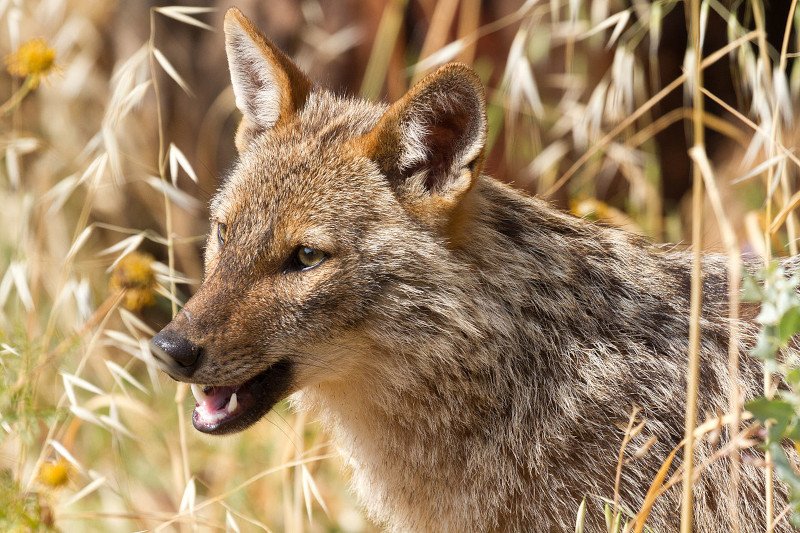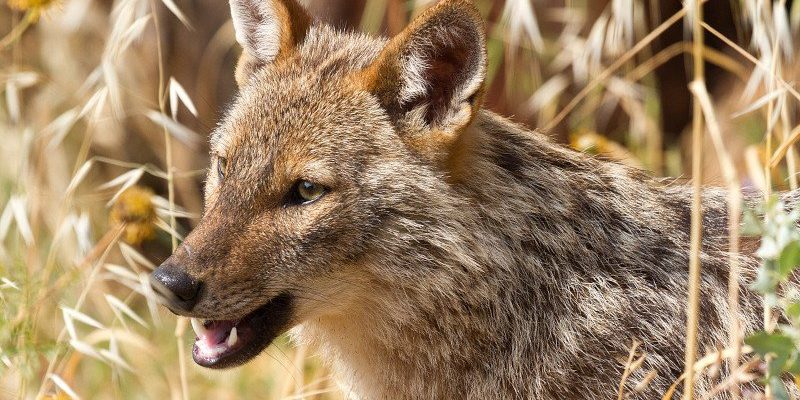
Let’s take a moment to chat about how the golden jackal, with its sleek body and golden-brown fur, fits into the grand narrative of canids (the family that includes dogs, wolves, and foxes). While they might share similarities with their wolf cousins, golden jackals have their special quirks that set them apart. So, grab a cup of coffee and let’s explore the exciting evolutionary story of the golden jackal!
Origins of the Golden Jackal
The story of the golden jackal begins millions of years ago. This species is believed to have diverged from a common ancestor shared with wolves and domestic dogs roughly 3 million years ago. That puts them right in the midst of the late Miocene epoch, a time when the world was warming and modern ecosystems were beginning to take shape.
These early canids were clever hunters and scavengers, adapting to various habitats across Europe, Asia, and Africa. The golden jackal (Canis aureus) represents one of the most versatile members of the canid family. Unlike its larger relatives, the wolves, golden jackals have adapted to live in different environments—from grasslands to deserts, and even suburban areas.
So, why did the golden jackal thrive in such diverse habitats? Here’s the thing: their diet plays a significant role. Golden jackals are omnivorous, which means they’ll chow down on anything from small mammals to fruits and insects. This adaptability allowed them to survive and flourish in various climates and ecosystems.
Physical Characteristics
When you spot a golden jackal, you might notice its slender build, long legs, and bushy tail. Adult golden jackals typically weigh between 15 to 30 pounds, standing about 16 to 20 inches at the shoulder. Their fur is a beautiful blend of golden, brown, and black, which helps them blend seamlessly into their surroundings.
You might be wondering why their appearance matters. The golden jackal’s *camouflage* is crucial for both hunting and avoiding larger predators. Their sharp eyes and acute sense of smell make them excellent hunters, often tracking prey in the early morning hours or around dusk when the world is quieter.
Additionally, these jackals have a unique vocalization that allows them to communicate with each other. From high-pitched yips to deep howls, they use sound to establish territory and keep in touch with their pack members. Honestly, it’s fascinating to think about how their physical attributes have evolved to suit their lifestyles!
Behavior and Social Structure
Golden jackals are social animals, often seen in pairs or small family groups. They are known for their monogamous bonding, forming long-term partnerships that help them raise their young together. Their social structure boosts their hunting success, as they can coordinate and strategize while chasing down prey.
You might picture jackals as loners, but they actually thrive in cooperative settings. In a pack, they can take down larger animals like gazelles or hunt smaller creatures more efficiently. This team effort is similar to how humans sometimes work together to solve problems or achieve goals. It’s all about using strengths to create balance.
One of the most interesting behaviors of golden jackals is their adaptation to human environments. In urban areas, they’ve learned to scavenge and hunt in ways that help them thrive alongside our bustling lives. It’s a testament to their resourcefulness and adaptability.
Diet and Hunting Strategies
Golden jackals are opportunistic eaters. Their diet varies widely based on their surroundings and the season. They will hunt a range of prey, including rodents, rabbits, and birds, but they don’t shy away from scavenging on carrion when the opportunity arises. This flexibility is crucial for survival, especially in harsh environments where food may be scarce.
Let me explain how their hunting strategies work. Golden jackals tend to hunt during twilight hours, taking advantage of the low light to stalk their prey. They use their keen senses to locate and track animals, employing techniques like ambush and stealth. Picture a cat quietly stalking a mouse; golden jackals use similar tactics to surprise their meals.
When hunting in a pack, they may create a distraction to separate weaker individuals from the group. It’s like teamwork in sports—each member has a role to play, and when they work together, they increase their chances of success.
Geographical Distribution and Habitat
Golden jackals have a wide geographical range. They are primarily found in regions of North and East Africa, the Balkans, the Middle East, and parts of South Asia. This diversity has led to various subspecies adapted to their specific environments, whether it’s the arid landscapes of the Middle East or the lush grasslands of Africa.
You might be surprised to learn that golden jackals are quite adaptable. They thrive in open areas, forests, and even agricultural lands. Their ability to adjust to changing habitats has allowed them to expand into new regions, sometimes even entering urban areas where they can find food near human settlements.
The golden jackal’s presence in these diverse habitats not only shows its adaptability but also highlights the importance of conservation. As human activity continues to encroach on wildlife, understanding their habitats and needs is crucial for their survival.
Conservation Status and Threats
While golden jackals are currently classified as “Least Concern” by the IUCN, they still face threats that could impact their populations. Habitat destruction due to urban development, agriculture, and climate change can disrupt their natural environments and food sources.
You might be wondering what we can do to help. One way is to support conservation efforts that focus on habitat preservation. Organizations working to maintain natural ecosystems often provide vital resources for wildlife, including golden jackals. By learning about their role in the ecosystem, we can better appreciate the need for their protection.
Additionally, understanding how golden jackals interact with humans is essential. They can sometimes be viewed as pests, especially if they prey on livestock. Finding ways to coexist is key, whether that means implementing protective measures for herds or simply appreciating their role as scavengers in the ecosystem.
Future of the Golden Jackal
The future of the golden jackal is intertwined with our actions. As urban areas expand and climate change impacts habitats, these adaptable canids will need our support. Their evolutionary history shows that they are survivors, but it’s up to us to ensure they continue to thrive.
Embracing coexistence means recognizing the value golden jackals bring to their ecosystems. From controlling rodent populations to being a part of the food web, they play an essential role. As we move forward, let’s strive to create a balance where humans and wildlife can thrive side by side.
In conclusion, the golden jackal is not just a fascinating creature with an intriguing evolutionary backstory; it’s a symbol of adaptability and resilience. By understanding their history and the challenges they face, we can become better stewards of the natural world, ensuring that future generations can enjoy the presence of these remarkable animals.

